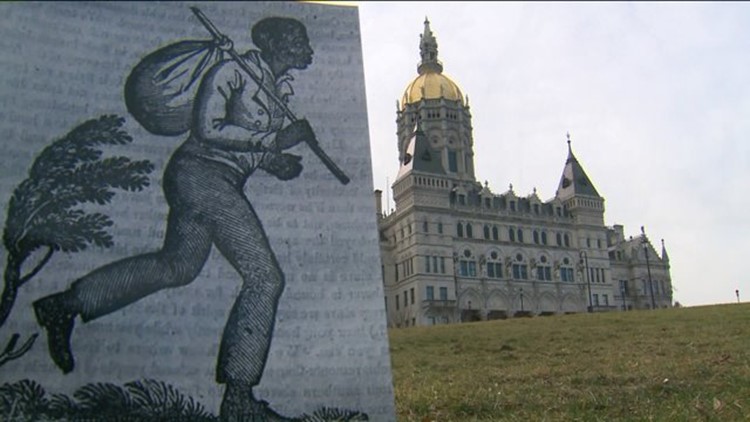NEW LONDON--When slavery is mentioned in the United States, the South and its large plantations often come to mind. However, historians are reminding people of slavery's roots in Connecticut.
In an historic New London neighborhood, where many people have lived for years, there’s still a lot of uncertainty about the oldest house on the block and the people who once called it home.
That home is the "Hempstead House," and was built in 1678. It's where Joshua Hempstead, a New London judge, farmer and father of nine kids lived.
These days, Aileen Novick is going in and out of the home. She's doing a lot of rearranging before it re-opens this spring.
Novick is using Hempstead's diary to portray his life and the many hats he wore in New London, but now Novick is trying to include another title he held not often talked about: slave owner.
"How do you now talk about him as a slave owner? What does that mean to add that other dimension to someone? That is such a strong title," said Novick.
In his diary, Hempstead frequently wrote about his slave, Adam Jackson. Novick says based on Joshua's writings, they're now including Adam's story throughout the house, including the attic, where they believe he slept until his owner's death in the 1750s.
"We just can't pretend Joshua did all of the work here by himself," said Novick.
Novick tells us Adam's story is crucial because it was common and shows slavery wasn't just the South's problem.
Katherine Kane, director of the Harriet Beecher Stowe Center in Hartford, says people don't realize slavery was prevalent and legal in Connecticut until it was fully abolished in 1848, not long before the Civil War.
Kane says while talking about Stowe, a famous Connecticut abolitionist, they make it a point to emphasize she was fighting to end slavery in her home state as well.
"In Connecticut or in the North, we often think of ourselves as abolitionists. We're proud of our role in emancipation, but the fact is, it's much more complicated than that," said Kane.
It's complicated because Kane says the North wasn't friendly and progressive like it's presented in many books and movies. Therefore, they use many artifacts in their archives at the Harriet Beecher Stowe Center to educate the public about what she calls the North's secret slave past, like a bill of sale and even a list of slaves in Hartford.
This is all part of an effort to paint an accurate picture of Connecticut's past and honor the people, like Adam Jackson, whose work went unrecognized for decades.
Historians are still trying to figure out what happened to Adam. Novick says they have found documents showing he was eventually freed. However, when his owner Joshua died, so did Adam's story.



